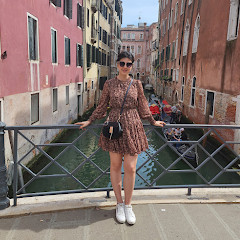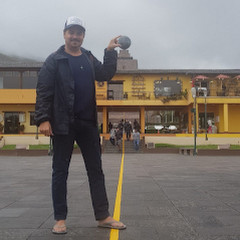Top Churchs in Rome, Italy
Top Rated Churchs in Rome

Curia Generaliza dei Frati Minori Conventuali

Chiesa Oratorio di San Silvestro

Portico della Basilica di San Paolo fuori le mura

Chiesa di Santa Maria in Via

Chiesa di San Sebastiano al Palatino

Basilica of San Giovanni in Laterano

Basilica of Saint Paul Outside The Walls

Basilica of San Pietro in Vincoli

Chiesa di Santo Stefano del Cacco

Santa Maria della Consolazione

Basilica di Santa Cecilia in Trastevere

Church of Santa Maria della Vittoria
Top Reviewed Churchs in Rome

Basilica of San Giovanni in Laterano

Basilica of Saint Paul Outside The Walls

Basilica of San Pietro in Vincoli

Church of Santa Maria della Vittoria

Basilica di Santa Cecilia in Trastevere

Church of San Pietro in Montorio

Basilica Santi Giovanni e Paolo

Basilica di Santo Stefano Rotondo al Celio

Basilica San Silvestro in Capite

Chiesa di Santa Maria in Via

Basilica of Saint Pudentiana

Santa Maria in Montesanto

Basilica Santi Giovanni e Paolo

Chiesa Oratorio di San Silvestro

Portico della Basilica di San Paolo fuori le mura

Chiesa di Santo Stefano del Cacco

Chiesa di San Nicola

Chiesa Santa Maria dei Miracoli

San Giovanni Battista dei Genovesi

Chiesa di San Callisto

Basilica of San Giovanni in Laterano

Basilica of Saint Pudentiana

Santissimo Sacramento al Laterano

Chiesa di Santa Maria in Via
Reviews








The cathedral of cathedrals. A beautiful church buildings and free to visit. Huge structures and nice marble statues. It is the seat of the Bishop of Rome, who is the Pope himself.




The doors are from the Roman senate, around 2100 years old, a must see. They are still functioning!! The church was really cool as well.



The St. John basilica is one of the four papal basilicas in Rome. Reachable by the B train. No entrance ticket. One of two places where wood from the Last Supper is kept. The other place right across the street from St. Giovanni, unfortunately, was not allowed to be photographed. There are 2 souvenir shops in this basilica. Pilgrim passport stamps available at the souvenir shop run by sisters.


Great experience to live in hotel just near that beautiful masterpiece!

Chiesa di Santa Maria in Via is an early 16th-century church built by architects Francesco da Volterra and Carlo Lombardi (1513). Seems it is located upon the grounds of past church buildings dating back to at least the 9th-century.
The facade is fairly typical of the Baroque while interior features a nicely decorated central nave along side chapels filled with nice artworks. The ceiling fresco in the nave is appealing and main altar is rather ornate easy to enjoy. The church highlight is found in the Chapel of the Madonna of the Well. You will find the small painting of Mary (13th-century) found floating in a overflowing water well at this location and inspiring the building of a church upon these grounds.
Worth 5-10 minutes to view the inside of Santa Maria in Via when passing through this area of Rome.
The facade is fairly typical of the Baroque while interior features a nicely decorated central nave along side chapels filled with nice artworks. The ceiling fresco in the nave is appealing and main altar is rather ornate easy to enjoy. The church highlight is found in the Chapel of the Madonna of the Well. You will find the small painting of Mary (13th-century) found floating in a overflowing water well at this location and inspiring the building of a church upon these grounds.
Worth 5-10 minutes to view the inside of Santa Maria in Via when passing through this area of Rome.




























I just checked out the Basilica di San Giovanni in Laterano and let me tell you, it's not just another church—it's the oldest and ranks above all other churches in the Catholic world, even above St. Peter’s Basilica! It’s actually the official ecclesiastical seat of the Bishop of Rome, who is the Pope himself. Walking inside, you’re immediately struck by the magnificent interior, with towering columns, ornate decorations, and stunning frescoes that really showcase its historical importance. The grandeur of the nave, the beautifully detailed 14th-century cloister, and the awe-inspiring statues of the Apostles all add to its majestic atmosphere.
One of the coolest features is the Scala Santa, or Holy Stairs, located right across from the basilica. These stairs are said to be the very ones Jesus climbed on his way to trial in Jerusalem, and they were brought to Rome by Saint Helena in the 4th century. Climbing these stairs on your knees is a tradition for many pilgrims. The blend of deep spirituality and impressive art and architecture makes this place a must-visit. This place is recommended for anyone interested in the rich tapestry of history, art, and spirituality that Rome has to offer.
One of the coolest features is the Scala Santa, or Holy Stairs, located right across from the basilica. These stairs are said to be the very ones Jesus climbed on his way to trial in Jerusalem, and they were brought to Rome by Saint Helena in the 4th century. Climbing these stairs on your knees is a tradition for many pilgrims. The blend of deep spirituality and impressive art and architecture makes this place a must-visit. This place is recommended for anyone interested in the rich tapestry of history, art, and spirituality that Rome has to offer.



The most calming music that I can listen to and being thrown away from physical world.
















































I do not have the words of a poet to describe how overwhelmingly opulent, ornate, and beautiful is this Basilica. I can't begin to imagine the skill and craft of countless painters, sculptors, stonemasons, carpenters, and so many more who contributed to this masterpiece. You should, if you can see for yourself, but I hope my photos show some of the beauty.
April 17, 2024
C & J
April 17, 2024
C & J





Very nice basilica, full of history. The central hallway with saints statues is amazing. Must see when in Rome. There is an airport like control at the entrance.Search for the hidden door if you need to use the bathroom






Molto bella - quanto puoi entrare 😊🙏🇮🇹

I love the miraculous water that flows inside one of the chapels in the church from which believers can drink


Estaba cerrada el día que fuí. Por la parte exterior es muy bella, rodeada de edificios nuevos (nuevos respecto a la basílica claro está)



A very beautiful church within the basilica grounds, definitely worth a visit when in Rome

























L'oratorio di San Silvestro è veramente un capolavoro di altri tempi, ancora vivo ed attuale nei colori e nello stato in cui si conserva. Il complesso pittorico racconta la storia di Silvestro I ed in particolare di Costantino, della sua guarigione dalla lebbra e successiva conversione, del battesimo e della sua donazione, sfruttata, fino a tutto il medioevo, nelle continue lotte di supremazia tra papato e imperatore, dove il possibile lascito di Costantino rappresenta l'emblema di quella alleanza e cessione di potere tra impero romano e chiesa, anello di congiunzione dell’esercizio del potere temporale da parte della chiesa e quello spirituale.
Fu costruito nel 1246, su volere del cardinale Stefano Conti, l'interno è a pianta rettangolare con volta a botte e decorato da maestranze bizantine, il pavimento è in stile cosmatesco, mentre la volta è decorata con motivi di stelle e croci.
Infine il presbiterio è decorato da postumi affreschi, attribuiti a Raffaellino da Reggio, datati 1574, con storie del Martirio dei quattro santi coronati.
L'oratorio è aperto durante le ore mattutine, l'apertura pomeridiana non è sempre garantita. L'ingresso non prevede l'acquisto di biglietti, ma è gradita una piccola offerta.
Fu costruito nel 1246, su volere del cardinale Stefano Conti, l'interno è a pianta rettangolare con volta a botte e decorato da maestranze bizantine, il pavimento è in stile cosmatesco, mentre la volta è decorata con motivi di stelle e croci.
Infine il presbiterio è decorato da postumi affreschi, attribuiti a Raffaellino da Reggio, datati 1574, con storie del Martirio dei quattro santi coronati.
L'oratorio è aperto durante le ore mattutine, l'apertura pomeridiana non è sempre garantita. L'ingresso non prevede l'acquisto di biglietti, ma è gradita una piccola offerta.




Nice little church with Sunday Mass in English- for timings see the pictures 📸. A little oasis of peace in the noise of Rome



Un porticato magnifico





























This is one of the nicest Basilica’s in Rome, it’s stunning. The colonnades are gorgeous, the artwork, stone work and museum is beautiful. It’s fairly large with lots to see and do. The artwork, statues, artifacts and religious clothing is very well preserved and displayed. Its collection is impressive, the staff were very friendly and knowledgeable. I would definitely recommend checking out this Basilica, it’s a great place for families and children of all ages.












This church is the oldest and highest ranking of the four major papal basilicas as well as one of the Seven Pilgrim Churches of Rome, holding the unique title of "archbasilica". It’s a magnificent expression of both religious dedication and architectural splendor. This cathedral invites you on a captivating journey through centuries of faith and art, with a grand facade adorned with intricate sculptures and majestic columns, creating a beautiful blend of art and spirituality. I was genuinely say that I haven't encountered a place of worship as grand as this and was lucky to be there on time to attend a Mass. It is also free entry.



A very peculiar closure to this big square with twin churches, Santa Maria dei Miracoli, to the right, and Santa Maria in Montesanto to the left. They would seem totally identical if it was not for the difference in their respective bell towers. Their presence happens to give more dignity to the long, long Via del Corso that starts right there between them and goes all the way to the heart of the city.









Very interesting from the murals on the front to the tile, frescos inside and the sculptures in the chapel. But it's very dark. January 9, 2024.


































Beautiful Church. So much marble & the scale is truly breathtaking. From the outside it’s a sight to behold but from the inside it’s a whole other work of art.
It takes 30 seconds to walk from one side to the other. Another bonus is that not many people know about or pass this area so it’s a lot less busy.
A beautiful place to come find peace & relax.
It takes 30 seconds to walk from one side to the other. Another bonus is that not many people know about or pass this area so it’s a lot less busy.
A beautiful place to come find peace & relax.

This is a somewhat obscure church but if you love art, it’s a must see. The apse above the altar has some 4th century mosaics that depict the Apostles in togas, like Roman senators. It’s a beautiful experience. The hours are limited so plan in advance.

An underrated gem hidden in the city of Rome. I nearly cried when I was inside. I’d post pics but for some reason my phone isn’t letting me but it is worth it.

La prima chiesa ortodossa a Roma con sede fissa, grazie al lascito di una principessa, piccola ma accogliente dell'interno di un palazzo d'epoca. Ed esattamente posizionata nel ex salone delle feste






Beautiful dome. Very simple nice calm place. Definitely less gold colours around but certainly needs to be visited.






























Gli affreschi dell'oratorio di San Silvestro rappresentano undici scene tratte dalla storia di Costantino e Silvestro e sono un esempio eccellente del livello a cui l'arte pittorica era giunta alla fine del XIII secolo. Nella parte superiore della lunetta d'ingresso siamo al cospetto di una straordinaria interpretazione del giorno del giudizio, rappresentata dal Salvatore in trono, che tiene la croce con la Vergine e San Giovanni Battista su ciascun lato e i dodici apostoli, sei su di un lato ed altri sei sull'altro.
Notiamo che i piedi del Salvatore appaiono abnormi rispetto a quelli degli apostoli e che uno degli apostoli sembra seduto sopra di un altro; questi dettagli rendeno l'idea di come lo stile bizantino sia ancora dominante nella sua rigidità di forme ed assenza di proporzione.
Nondimeno, una serie di scene dell'imperatore Costantino sono molto interessanti.
Esse rappresentano l'imperatore che consulta tre dottori, i quali gli raccomandano un bagno con il sangue dei neonati per curarlo della sua lebbra. L'imperatore rifiuta la prescrizione consigliata. Nel corso della notte gli appaiono in sogno gli apostoli e gli dicono come può essere curato. Costantino manda tre messaggeri a prendere Silvestro che stava sul monte Soratte. Il papa tornato a Roma mostra a Costantino le immagini degli apostoli che Costantino riconosce come i visitatori del suo sogno. L'imperatore viene battezzato da Silvestro.
Questi affreschi sono quantomeno discutibili come stile pittorico, pur possedendo un fascino naive e rendono l'idea dei rapporti di potere esistenti nel dodicesimo secolo. L'entrata del Papa a Roma, ad esempio, nella scena in cui Silvestro è in sella al cavallo bianco e si presenta a Costantino che è in piedi, ci ricorda la sottomissione del Barbarossa al cospetto di papa Alessandro III.
Di tutt'altra natura e tenore artistico sono gli affreschi del presbiterio realizzati nel XVI secolo da Raffaellino da Reggio, raffiguranti una crocifissione e un'annunciazione sulla parete centrale e scene del martirio dei quattro santi coronati sulle due pareti laterali.
Impreziosisce in modo mirabile l'intera struttura dell'oratorio uno straordinario pavimento cosmatesco.
Notiamo che i piedi del Salvatore appaiono abnormi rispetto a quelli degli apostoli e che uno degli apostoli sembra seduto sopra di un altro; questi dettagli rendeno l'idea di come lo stile bizantino sia ancora dominante nella sua rigidità di forme ed assenza di proporzione.
Nondimeno, una serie di scene dell'imperatore Costantino sono molto interessanti.
Esse rappresentano l'imperatore che consulta tre dottori, i quali gli raccomandano un bagno con il sangue dei neonati per curarlo della sua lebbra. L'imperatore rifiuta la prescrizione consigliata. Nel corso della notte gli appaiono in sogno gli apostoli e gli dicono come può essere curato. Costantino manda tre messaggeri a prendere Silvestro che stava sul monte Soratte. Il papa tornato a Roma mostra a Costantino le immagini degli apostoli che Costantino riconosce come i visitatori del suo sogno. L'imperatore viene battezzato da Silvestro.
Questi affreschi sono quantomeno discutibili come stile pittorico, pur possedendo un fascino naive e rendono l'idea dei rapporti di potere esistenti nel dodicesimo secolo. L'entrata del Papa a Roma, ad esempio, nella scena in cui Silvestro è in sella al cavallo bianco e si presenta a Costantino che è in piedi, ci ricorda la sottomissione del Barbarossa al cospetto di papa Alessandro III.
Di tutt'altra natura e tenore artistico sono gli affreschi del presbiterio realizzati nel XVI secolo da Raffaellino da Reggio, raffiguranti una crocifissione e un'annunciazione sulla parete centrale e scene del martirio dei quattro santi coronati sulle due pareti laterali.
Impreziosisce in modo mirabile l'intera struttura dell'oratorio uno straordinario pavimento cosmatesco.

This church was rebuilt following reports of a miracle. Legend said On the night of 26 September 1256, the well overflowed. A picture of Our Lady was floating on the waters… today in the chapel (the first on the right of the current church) there is still the well of the miracle. So don’t forget to drink some holy water.

Very interesting. The chapel at the right side of the entrance is amazing.
Don’t forget to drink the miraculous water 😉
Don’t forget to drink the miraculous water 😉


Хороший домовой храм!

Very old church with some extraordinary treasures inside. Although the interior has been modified in the baroque era, the church has the oldest apse mosaic in Rome (400 AD) with extraordinary qualities. Also the Romain remains are worth visiting below the church. The very passionate and sympathetic man that is always there when the church is open, is very willing to let you discover all the treasures of this monument.





Impressive Basilica built on the IV century on an ancient domus romana. Not only it has a beautiful inside chapel but outside there is Emperor Claudio old house and more historic features. Just amazing!!!

Принял крещение, пришел к Богу после долгих исканий, в этой первой для меня церкви. Нашел себя, крестился. 1983 год. Мне было 25. Долгие, чудесные разговоры с о. Михаилом (father Michael) на прекрасном выученном им русском языке. Потом стал прислужником, чтецом. Был тогда ещё прекрасный чтец, Стефано Дел Исла (мой крестный отец). Читал на английском и итальянском, служба велась на 3 языках. Иногда в пустом храме. О. Михала назывaли lunga barba, lunga messa... Благодарю Господа за этот поворотный случай моей жизни.






Pessima accoglienza, ieri unica volta che ho trovato aperta la chiesa, mi si piazza uno davanti con faccia strafottente che rendeva quasi impossibile l'accesso al luogo di culto. Poi non contento, mi ha urlato alle spalle e allora mi sono girato per chiedergli che caspitello volesse. Mi ha detto che non si possono fare foto. Sapete che ho fatto? Le foto le ho fatte lo stesso perché un tale atteggiamento così arrogante è palesamente contrario all'articolo 21 della nostra Costituzione.


Ci passo davanti spesso ma solo una volta sono entrato, e quella volta sono rimasto senza parole. La luce che si riceve è quasi abbagliante, una imponente navata ti accoglie e ti guida verso la magnificente abside broccata d'oro. Transetto e deambulatorio quasi non li vedi in quanto catturato dalle pitture sulle volte. Merita una visita anche veloce ma è da fare.





The construction of Chiesa Santa Maria dei Miracoli is tied to a legend about a miraculous event on the banks of the Tiber River. On June 20, 1325, a mother in distress called upon a painting of the Virgin Mary to save her child who had fallen into the river. Miraculously, the child was rescued, and in gratitude, a chapel was erected to honor the Virgin Mary. Inside the chapel, the painting, known as the Madonna of Miracles, was placed, becoming a symbol of divine intervention.


Nel cuore di Roma un piccolo scrigno da scoprire

Nádherná Bazilika nie príliš známa preto je tam aj malo turistov,v bazilike sú v kaplnkach omše v latinskom jazyku,v objekte je nádherná záhrada so sochou sv.Pavla , obchod so suvenírmi,cukráreň.




Splendido esempio di Istituto di culto in stile romanico, proprio a lato della piazza S. Maria in Trastevere, al centro dello storico Rione Trastevere, un gioiello della Roma popolare sopravvissuto al passare dei secoli e ad una modernità che spesso tende all'omologazione urbanistica esasperata.Da visitare







Beautiful! Was a pleasure meeting Father Mario
















The Basilica of Saints John and Paul on the Caelian Hill was built in 398 in the Romanesque style. Its interior was renovated in the Baroque era.
During excavations, a series of ancient Roman rooms were discovered under the church, dating to the first century. These rooms were a vivarium in which wild animals were kept before being used in entertainments held at the Colosseum, with a passage connecting the two.
During excavations, a series of ancient Roman rooms were discovered under the church, dating to the first century. These rooms were a vivarium in which wild animals were kept before being used in entertainments held at the Colosseum, with a passage connecting the two.


I happened to find here when I walked to Vatican city from Piazza di Spagna and gasped at these magnificent buildings. I don't understand how I missed here when planning out my trip. A must visit when you travel Rome.




Ogni domenica dalle 9:00 alle 11:00 servizio ortodosso.

Good for relaxing, with good restaurants around


In Piazza di Popolo, two identical churches stand beside each other. The Santa Maria dei Mircoli and the Santa Maria in Montesanto are known as the Twin Churches because of their identical exterior structure. However, if one looks closely and compares both churches technically one will see that there are some slight differences.
These churches were originally designed by Carlo Rainaldi as part of a design for a monumental passage of Via del Corso. These constructions were commissioned by Pope Alexander VII while Cardinal Girolamo Gastaldi financed both churches. As a tribute, Gastaldi’s crest is present in each of the twin churches.
These churches were originally designed by Carlo Rainaldi as part of a design for a monumental passage of Via del Corso. These constructions were commissioned by Pope Alexander VII while Cardinal Girolamo Gastaldi financed both churches. As a tribute, Gastaldi’s crest is present in each of the twin churches.


Für mich die schönste Kirche von Rom :-) Außerhalb und früh morgens fantastisch leer





The Chapel, also called Oratorio (prayer room) is from the 13th century. It has beautiful frescoes, some in the apse however are more recent. Definitely worth a visit.
The entry is free of charge but you need to ask the nuns to open the door.
The cloister is still closed since covid .
The entry is free of charge but you need to ask the nuns to open the door.
The cloister is still closed since covid .












Magnificent church! It's not so crowded due to the distance from the center of Rome but it's worth spending some time to visit it. Inside the church you can find the carnivorous spot that St. Paul was found in.



Beautiful Russian orthodox church






L'Oratorio merita ma è stato un "contentino" elargito dalla cortese monaca che non potendoci fare visitare la chiesa (era in atto una disinfestazione) né il chiostro (che dice "chiuso" del tutto), ci ha offerto di visitare quello liberamente. Dopo tanta strada (veniamo da Bergamo) e l'interesse che nutrivo per vedere alcuni particolari per una ricerca che sto facendo, ero stralunata. Tutto chiuso? Vada almeno per l'Oratorio e in parte ci ha ripagato della delusione. Credo sia stata un'esperienza unica visitarlo da soli, potendovi sostare con calma. Tra l'altro è il luogo di sepoltura dei Maestri Comacini che lavorarono qui ai SS. Quattro Coronati (patroni della loro categoria), che amo particolarmente.
L'oratorio di San Silvestro è decorato da notevoli affreschi duecenteschi in stile bizantino con "Storie di papa Silvestro e dell'imperatore Costantino I", testimonia anche nel programma iconografico l'importanza politica del complesso nel contesto del potere temporale del papato.
L'interno è particolare per il pavimento cosmatesco.
L'oratorio di San Silvestro è decorato da notevoli affreschi duecenteschi in stile bizantino con "Storie di papa Silvestro e dell'imperatore Costantino I", testimonia anche nel programma iconografico l'importanza politica del complesso nel contesto del potere temporale del papato.
L'interno è particolare per il pavimento cosmatesco.








Two beautiful churches that are one beside the other. Very beautiful interiors with beautiful art work on the walls and ceiling. The church is very peaceful, calming and relaxing. Worth visiting when if you are in Rome.

Sehr interessante Basilika, sehenswert. Leider unverschämtes Personal am Eintritt zum römischen Haus unterhalb. Verwiesen uns am Mittwoch auf Öffnung am Donnerstag. Um 15 Uhr ohne weitere Erklärung: heute geschlossen. Einfach so. Außerdem sind fast alle Sehenswürdigkeiten um 17.30 geschlossen. Müllberge rundum, Bierflaschen und Büchsen massenhaft auf Plätzen und Straßenrändern. Viele Objekt geschlossen, viele Baustellen . U-Bahnhöfe mit defekten Automaten und Rolltreppen. Einfach Katastrophe



Desayuno italiano. Auténtico bar de barrio con precios baratos. Por la tarde-noche es imprescindible acudir a la buena cerveza.


Nice place to hang out
A local bar across the street
A local bar across the street



A hidden gem! When I came here my life was in shambles and I had no idea what to think. When I left here my life was amazing and I had a proficient understanding of how Pope St. Silvester put the “Holy” in “Holy Roman Empire.” Huge improvement!

The best place to sit and relax in a company with a cheap beer






Католицька церква та вулички біля неї в районі Трастевере

Mycket trafik precis bredvid.





Die Basilika Santi Giovanni e Paolo ist eine romanische Kirche in einem römischen Wohnhaus aus dem 4. Jh.. Sie wurde im 12. Jh. erweitert und das Innere im 18. Jh. renoviert. Sie ist die Klosterkirche des Passionistenordens. Die Kirche wirkte im Dunklen nicht so einladend auf uns, dennoch war sie interessant.
Wenn sie beleuchtet ist, ist sie bestimmt sehr sehenswert. Das können wir aber nur schätzen.
Der Eintritt ist frei.
Wenn sie beleuchtet ist, ist sie bestimmt sehr sehenswert. Das können wir aber nur schätzen.
Der Eintritt ist frei.




Basilica built on a deeper, roman ground layer. Lovely entrance with beautiful stone detailing. Appreciated the wonderful ceiling. No tourists to be seen here.

Bellissima chiesa, non andrò a mentire, sopratutto per il nome del santo!

Chiesa molto bella, rifinita, ma alcuni parte hanno bisogno di restaurazione.

Il quadriportico della Basilica di San Paolo fuori le Mura è il primo colpo d'occhio donato da questa straordinaria basilica sepolcrale (commentata nella recensione apposita). E questo colpo d'occhio, come faccio notare ai miei turisti, è ottimale per comprendere come, tra le altre cose, il luogo di culto spicchi anche per dimensioni!
Sebbene il quadriportico sia ottocentesco esso, in realtà, ricalca quello che originariamente doveva essere l'originale quadriportico antecedente l'ingresso di origine medievale, se non anche più antica. Un modo come un altro per ricostruire ciò che andò perduto in un devastante incendio che distrusse quasi completamente la basilica nel 1823. Comunque sia le colonne, in un numero maggiore di 100, sembrano quasi volerci abbracciare per portarci, fisicamente e non solo, in una delle basiliche più belle di Roma.
Sebbene il quadriportico sia ottocentesco esso, in realtà, ricalca quello che originariamente doveva essere l'originale quadriportico antecedente l'ingresso di origine medievale, se non anche più antica. Un modo come un altro per ricostruire ciò che andò perduto in un devastante incendio che distrusse quasi completamente la basilica nel 1823. Comunque sia le colonne, in un numero maggiore di 100, sembrano quasi volerci abbracciare per portarci, fisicamente e non solo, in una delle basiliche più belle di Roma.









Questo imponente Quadriportico fa parte della suggestiva Basilica di San Paolo fuori le mura, la quale si trova lungo la Via Ostiense a circa due Km dalla Piramide Cestia e quindi fuori le Mura Aureliane a Roma.
Prima di arrivare all’entrata della Basilica si accede a questo Quadriportico con giardino, progettato da Luigi Poletti nel 1868 e realizzato da Guglielmo Calderini (1837 – 1916), si presenta con 70 metri per lato, con circa 150 colonne monoblocco in marmo bianco, con capitelli corinzi, alte 10 metri.
Dalla parte dell’entrata è disposta una triplice fila di colonne, mentre ai lati due file di colonne e dalla parte del portico (facciata della Basilica) una sola fila.
Al centro come “gemma”, troneggia, in un bel giardino, la maestosa statua di S. Paolo, realizzata in marmo di Carrara, da Giuseppe Obici (n.1807 – m. 1878).
Sotto il Portico spiccano due porte:
• Porta Centrale (altezza 7,48 mt – larghezza 3,35 mt), opera del 1931 di Antonio Maraini, si presenta riccamente decorata, incorniciata e architravata, con a coronamento un frontone triangolare aperto, con nel timpano un bassorilievo il quale rappresenta San Paolo.
All’interno per ogni lato sono visibili sei suggestivi bassorilievi bronzei, dove sono rappresentate delle scene della vita di San Pietro e Paolo, mentre al centro per tutta l’altezza e la larghezza della porta spicca una croce argentea intarsiata con pietre dure.
• Porta Santa (altezza 3,71 mt – larghezza 1,82 mt), opera del 2000 dello scultore Enrico Manfrini (nato a Lugo di Romagna il 1917 morto a Milano il 2004), in essa sono rappresentate delle scene significative, fra le quali:
1. San Paolo sulla Via di Damasco
2. Il Cristo risorto
3. La Pentecoste
4. Il Pontefice e l’abate con i fedeli in preghiera
Dietro la porta è presente un Muro che viene demolito, con celebrazione solenne, in occasione di ogni anno Santo, quelli ordinari ogni 25 anni e poi ci sono quelli straordinari.
Nell’interno della Basilica in corrispondenza di questa porta è posta la bellissima “Porta Bizantina” (XI secolo), la quale da sola meriterebbe una recensione.
Prima di arrivare all’entrata della Basilica si accede a questo Quadriportico con giardino, progettato da Luigi Poletti nel 1868 e realizzato da Guglielmo Calderini (1837 – 1916), si presenta con 70 metri per lato, con circa 150 colonne monoblocco in marmo bianco, con capitelli corinzi, alte 10 metri.
Dalla parte dell’entrata è disposta una triplice fila di colonne, mentre ai lati due file di colonne e dalla parte del portico (facciata della Basilica) una sola fila.
Al centro come “gemma”, troneggia, in un bel giardino, la maestosa statua di S. Paolo, realizzata in marmo di Carrara, da Giuseppe Obici (n.1807 – m. 1878).
Sotto il Portico spiccano due porte:
• Porta Centrale (altezza 7,48 mt – larghezza 3,35 mt), opera del 1931 di Antonio Maraini, si presenta riccamente decorata, incorniciata e architravata, con a coronamento un frontone triangolare aperto, con nel timpano un bassorilievo il quale rappresenta San Paolo.
All’interno per ogni lato sono visibili sei suggestivi bassorilievi bronzei, dove sono rappresentate delle scene della vita di San Pietro e Paolo, mentre al centro per tutta l’altezza e la larghezza della porta spicca una croce argentea intarsiata con pietre dure.
• Porta Santa (altezza 3,71 mt – larghezza 1,82 mt), opera del 2000 dello scultore Enrico Manfrini (nato a Lugo di Romagna il 1917 morto a Milano il 2004), in essa sono rappresentate delle scene significative, fra le quali:
1. San Paolo sulla Via di Damasco
2. Il Cristo risorto
3. La Pentecoste
4. Il Pontefice e l’abate con i fedeli in preghiera
Dietro la porta è presente un Muro che viene demolito, con celebrazione solenne, in occasione di ogni anno Santo, quelli ordinari ogni 25 anni e poi ci sono quelli straordinari.
Nell’interno della Basilica in corrispondenza di questa porta è posta la bellissima “Porta Bizantina” (XI secolo), la quale da sola meriterebbe una recensione.

Main entrance is on the Largo Chigi, at the west end of the Via del Tritone in the rione Trevi, It is very easy to confuse this church with the nearby one of Santa Maria in Via Lata.
Santa Maria in Via, whose appellative means "on the Way"
Calm place to pray amids busy street, about 3 minutes walk to Trevi Fountain..
Santa Maria in Via, whose appellative means "on the Way"
Calm place to pray amids busy street, about 3 minutes walk to Trevi Fountain..

Santo Stefano del Cacco - bisericile mici din Roma sun antice si înconjurate de un voal afascinant de legende .
Originile acestui mic lăcaș de cult catolic duc până in secolul IX, a fost de la început dedicată Sfantului Ștefan iar derivația Cacco vine de la o statuie cinocefala ce se afla lângă ușă ce il reprezenta pe Zeului Egiptean Anubi - zeul cu cap de șacal care a fost confundata de romani cu o maimuță- macac, iar cum localnicii sunt domoli în toate au prescurtat macaco in cacco😁
Biserica a fost donată de papa Medici Pio IV călugărilor silvestrini, iar interiorul păstrează o prețioasă fresca realizată de Perin del Vaga ce il redă pe Isus Hristos pietos.
Originile acestui mic lăcaș de cult catolic duc până in secolul IX, a fost de la început dedicată Sfantului Ștefan iar derivația Cacco vine de la o statuie cinocefala ce se afla lângă ușă ce il reprezenta pe Zeului Egiptean Anubi - zeul cu cap de șacal care a fost confundata de romani cu o maimuță- macac, iar cum localnicii sunt domoli în toate au prescurtat macaco in cacco😁
Biserica a fost donată de papa Medici Pio IV călugărilor silvestrini, iar interiorul păstrează o prețioasă fresca realizată de Perin del Vaga ce il redă pe Isus Hristos pietos.

A church or a chapel existed on the site in the Middle Ages. Cardinal Pietro Capocci had a house here with a well in the stables. On the night of 26 September 1256, it overflowed and an icon of the Blessed Virgin was found floating on the water (so church is known as Our Lady of the Well). Pope Innocent VIII ordered the construction of the current church, which was built between 1491–1513 and granted to the Servite Order by Pope Leo X. Now serves as a national church for the Ecuadorian community.

You can't enter if you don't now how to enter which you can know only after you enter.










Antica chiesa che sorge sui resti dell'iseo campense.


Russian orthodox Church of Saint Nicholas where you can pray in peace because its very quiet and where you have your privacy! You can meet all orthodox Christians not only Russian.


Удивительно прекрасное место, где ощущается дух, радость и любовь божья.


Unique place place to see one of the ancient churchs of Rome not full of Tourists, but close enough to the Colosseum.

Bellissima, ci vado da 15 anni, dentro ha l'aria di pace, fuori c'è il giardino bellissimo. Anche se sono Ucraina ci vado lo stesso nella chiesa perché siamo tutti sotto lo stesso Dio.

If you wanna go to Rome . You have to visit this place

There are two places to visit here, the church and the much more famous cloisters. The latter are open on Tuesdays and Thursdays, 14:00 to 16:00 in winter and 15:00 to 18:00 in summer.
The church, however, is only open for liturgical events. There is a regular Mass on Sundays at 11:00.
The church, however, is only open for liturgical events. There is a regular Mass on Sundays at 11:00.











Única al mondo..... Uno scrigno di Spiritualità

Cute little church

Open on Tuesdays and Thursdays from 15.00 to 18.00

the chocolate ice cream is amazing, a very nice place too👍

We weren't able to fully appreciate this church, as a very rude nun didn't want us to enter. This is the national church of the Philippine community in Rome and although the local congregation were walking in and out quite freely, we were clearly not welcome. But it's a church, so we sneaked quietly down one side to get a closer look at the stunning Medieval frescoes and the wonderful depiction of the evangelists. The church is at the Roman Street level of the time, well below the modern street








Eintritt frei und sehr schön von innen. Besondere Atmosphäre durch die Baumaterialien und Ausleuchtung. Zuweg ist etwas verbaut und schwer zu finden.




















L’Hospitium Genoensium presso il Porto di Ripa Grande, fu fondato da Meliaduce Cicala (1430 -1481), nobile genovese, che, dopo aver ricoperto cariche pubbliche nella sua città, si trasferì definitivamente a Roma nel 1467 per occuparsi di attività commerciali e bancarie, che gli consentirono di incrementare le sue già notevoli ricchezze.
I lavori dell’Ospedale della Nazione Ligure, pensato per le esigenze dei marinai poveri, inizialmente dedicato a S. Sisto, poi allo stesso Meliaduce Cicala ed infine a S. Giovanni Battista dei Genovesi, iniziarono nel 1482 – 83 e furono affidati alla sovrintendenza di Giorgio della Rovere, vescovo di Orvieto, Bartolomeo Maraschi, vescovo di Città di Castello, e Stefano Novelli canonico della basilica di S. Pietro. Qualche tempo dopo fu pure intrapresa la costruzione della chiesa, citata per la prima volta nel catalogo degli edifici religiosi di Roma del 1492.
L’Ospedale si articolava intorno ad un bellissimo chiostro realizzato nella seconda metà del XV secolo ed attribuito a Baccio Pontelli. Il chiostro, capolavoro assoluto dell’architettura quattrocentesca romana, è sorprendente per la sua integrità (è considerato il chiostro rinascimentale meglio conservato di Roma) e per la sua intima monumentalità: il giardino di melangoli, che crescono intorno all’elegante pozzo al centro del chiostro, non può che stupire chi entra dal dimesso ingresso su Via Anicia e infondere un forte senso di armonia e pace, in un salto indietro nel tempo davvero emozionante.
Sotto il portico destro si trova la porta di accesso all’Oratorio della Confraternita, nel quale è un pregevole soffitto a cassettoni seicenteschi con stemmi, e un ciclo di affreschi con Storie della Vergine e del Battista, degli inzi del ‘600. Gli affreschi sono interessantissimi perche rivelano l’opera di mani e attitudini diverse, alcune più colte e accademiche ( quella del bologenese Guido Signorini e di Gerolamo Mariotti) altri più popolari ed espressive, in accordo con l’ambiente portuale in cui il complesso sorgeva.
Infine, la chiesa si presenta nella forma assunta nel rifacimento ottocentesco, ma conserva ancora al suo interno il pregevole monumento funebre del fondatore Meliaduce Cicala, opera di Andrea Bregno.
I lavori dell’Ospedale della Nazione Ligure, pensato per le esigenze dei marinai poveri, inizialmente dedicato a S. Sisto, poi allo stesso Meliaduce Cicala ed infine a S. Giovanni Battista dei Genovesi, iniziarono nel 1482 – 83 e furono affidati alla sovrintendenza di Giorgio della Rovere, vescovo di Orvieto, Bartolomeo Maraschi, vescovo di Città di Castello, e Stefano Novelli canonico della basilica di S. Pietro. Qualche tempo dopo fu pure intrapresa la costruzione della chiesa, citata per la prima volta nel catalogo degli edifici religiosi di Roma del 1492.
L’Ospedale si articolava intorno ad un bellissimo chiostro realizzato nella seconda metà del XV secolo ed attribuito a Baccio Pontelli. Il chiostro, capolavoro assoluto dell’architettura quattrocentesca romana, è sorprendente per la sua integrità (è considerato il chiostro rinascimentale meglio conservato di Roma) e per la sua intima monumentalità: il giardino di melangoli, che crescono intorno all’elegante pozzo al centro del chiostro, non può che stupire chi entra dal dimesso ingresso su Via Anicia e infondere un forte senso di armonia e pace, in un salto indietro nel tempo davvero emozionante.
Sotto il portico destro si trova la porta di accesso all’Oratorio della Confraternita, nel quale è un pregevole soffitto a cassettoni seicenteschi con stemmi, e un ciclo di affreschi con Storie della Vergine e del Battista, degli inzi del ‘600. Gli affreschi sono interessantissimi perche rivelano l’opera di mani e attitudini diverse, alcune più colte e accademiche ( quella del bologenese Guido Signorini e di Gerolamo Mariotti) altri più popolari ed espressive, in accordo con l’ambiente portuale in cui il complesso sorgeva.
Infine, la chiesa si presenta nella forma assunta nel rifacimento ottocentesco, ma conserva ancora al suo interno il pregevole monumento funebre del fondatore Meliaduce Cicala, opera di Andrea Bregno.

Simple from outside, stunning interior. Beware though, beggars outside force you to pay to enter.


Ahi, Costantin, di quanto mal fu matre,
non la tua conversion, ma quella dote
che da te prese il primo ricco patre!
Dante, Inferno, XIX, 115-117
Di origine antichissima (IV secolo, titulus Aemilianae o titulus Ss. Quattuor Coronatorum) il complesso fortificato dei SS. Quattro Coronati (chiesa, monastero, oratorio e palazzo vescovile) è stato per secoli un vero e proprio fortilizio a difesa dei complessi Lateranensi e residenza papale. Al suo interno nel 1246 fu edificato, per volere del cardinale Stefano Normandis, titolare di Santa Maria in Trastevere, un Oratorio che fu consacrato lo stesso anno, come ricorda ancora la lapide commemorativa, dal vescovo di Ostia Rinaldo dei Conti di Segni, e che sarà l’oggetto principale della nostra visita. Nel 1248 l’interno fu completamente affrescato da Maestri di Bizantini con una serie di scene desunte dagli Actus Silvestri un documento che riporta episodi leggendari della vita di papa Silvestro I e dell’imperatore Costantino, tramandati in diverse versioni da numerosi manoscritti, in latino, in greco e in siriaco. Si tratta di un vero e proprio documento di propaganda della Chiesa: in esso, attraverso la divulgazione della falsa “donazione di Costantino”, papa Innocenzo IV, all’epoca in lotta con l’imperatore Federico II, vuole dimostrare la superiorità del potere della Chiesa di Roma su quello imperiale.
Un altro prezioso tassello del viaggio nell’arte medievale di Roma.
non la tua conversion, ma quella dote
che da te prese il primo ricco patre!
Dante, Inferno, XIX, 115-117
Di origine antichissima (IV secolo, titulus Aemilianae o titulus Ss. Quattuor Coronatorum) il complesso fortificato dei SS. Quattro Coronati (chiesa, monastero, oratorio e palazzo vescovile) è stato per secoli un vero e proprio fortilizio a difesa dei complessi Lateranensi e residenza papale. Al suo interno nel 1246 fu edificato, per volere del cardinale Stefano Normandis, titolare di Santa Maria in Trastevere, un Oratorio che fu consacrato lo stesso anno, come ricorda ancora la lapide commemorativa, dal vescovo di Ostia Rinaldo dei Conti di Segni, e che sarà l’oggetto principale della nostra visita. Nel 1248 l’interno fu completamente affrescato da Maestri di Bizantini con una serie di scene desunte dagli Actus Silvestri un documento che riporta episodi leggendari della vita di papa Silvestro I e dell’imperatore Costantino, tramandati in diverse versioni da numerosi manoscritti, in latino, in greco e in siriaco. Si tratta di un vero e proprio documento di propaganda della Chiesa: in esso, attraverso la divulgazione della falsa “donazione di Costantino”, papa Innocenzo IV, all’epoca in lotta con l’imperatore Federico II, vuole dimostrare la superiorità del potere della Chiesa di Roma su quello imperiale.
Un altro prezioso tassello del viaggio nell’arte medievale di Roma.

It's a Marian Sanctuary located in the Center City of Rome where the Miracle of the Well took place on September 26, 1256 the waters of which brought an image of the Virgin Mary on a slate to the brim of the Well remaining afloat where the aides tried to seize it but without success and grabbed only by Card. Pietro Capocci who brought it to Pope Alexander IV to witness the incident and after a juridical trial, the latter was declared a miracle and since then whoever drinks the water with devotion, the Virgin Mary grants graces. A must to visit for the beauty of the church and its history!




Santi Giovanni e Paolo liegt über dem Colloseum und dem Circus Maximus. Die Kirche war sehr schön geschmückt, vermutlich wurde hier heute schon eine Hochzeit abgehalten. Die Kirche lädt ja förmlich dazu ein.




amazed by the work done on the altar. very calming. great break from the piazza outside .can spend quite a bit of time looking at it. the tombs inside are intriguing

Simply beautiful. The medieval frescoes show the legend of the holy pope Silvester and the so-called Donation of Constantine. The frescoes have withstood time admirably and haven't lost a bit of their beauty. You have to ring the bell at the entrance of the enclosure of the nuns. We paid 1 Euro per person to enter.

A tiny gem of a chapel, with wonderful medieval, almost Byzantine, frescoes and a lovely cosmatesque pavement.

Amen